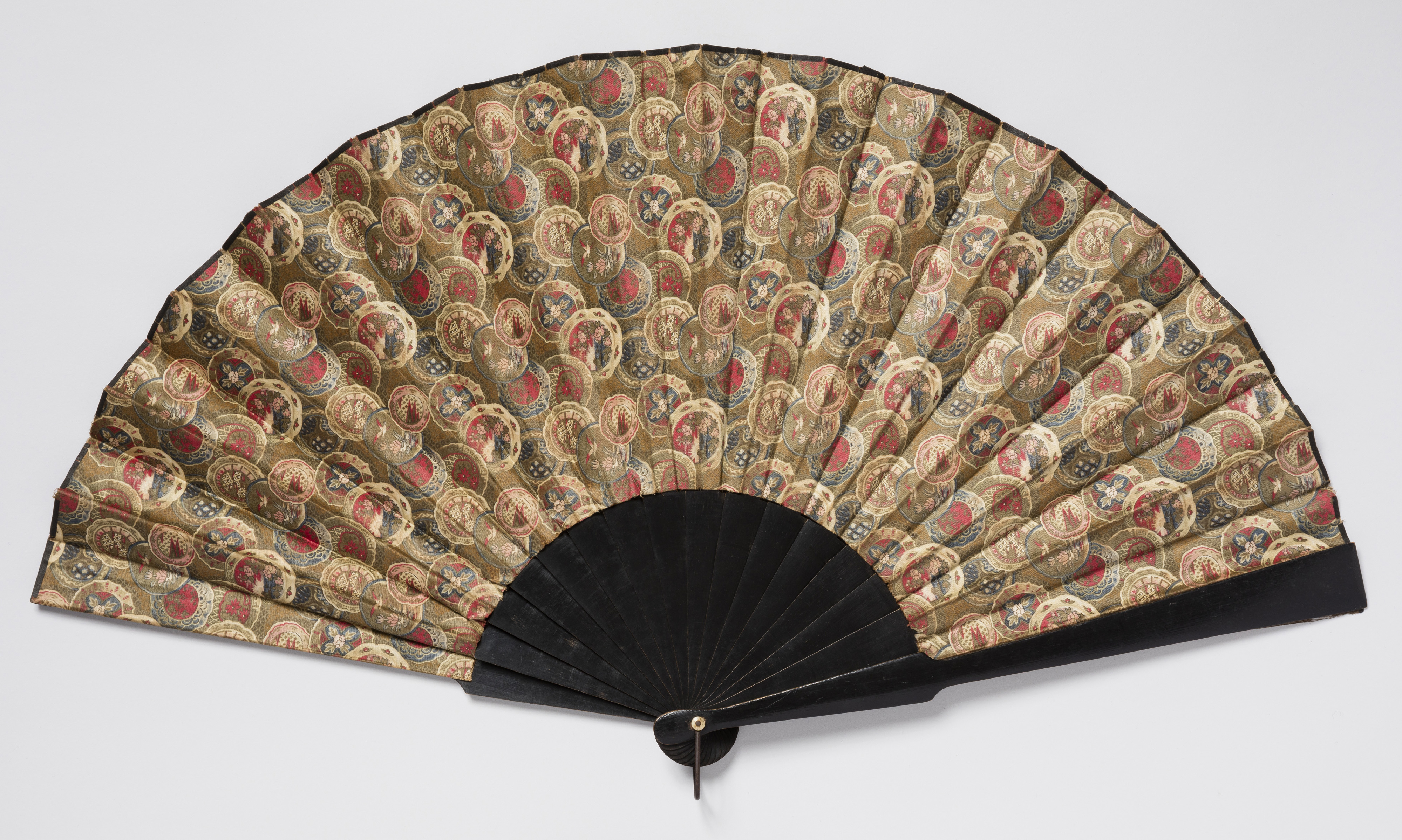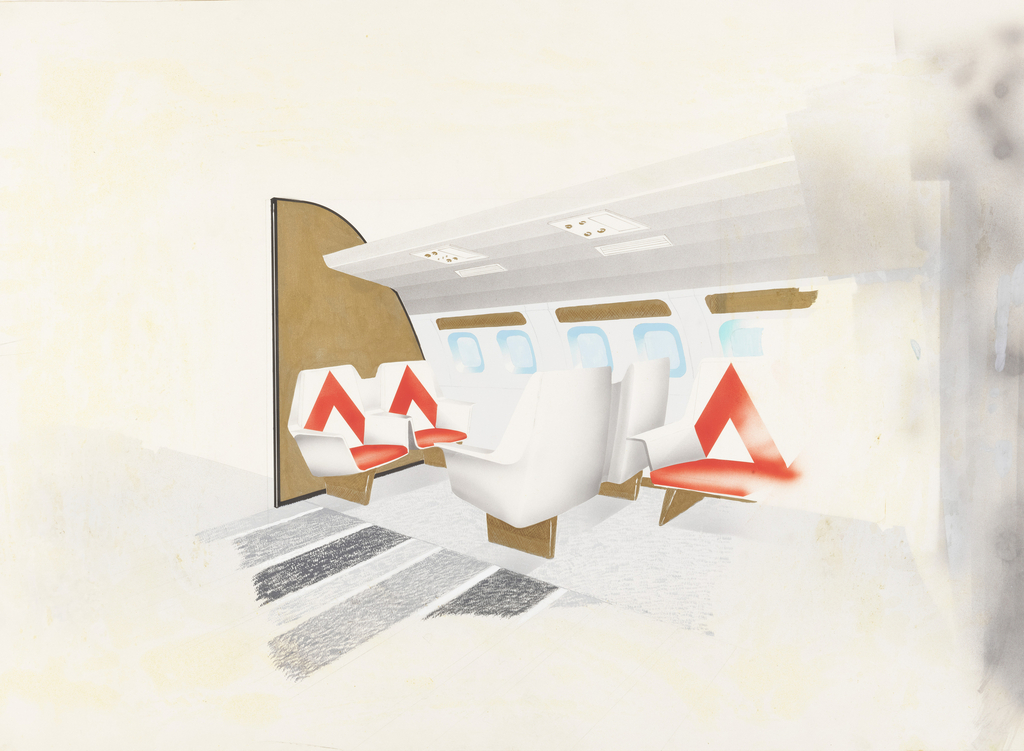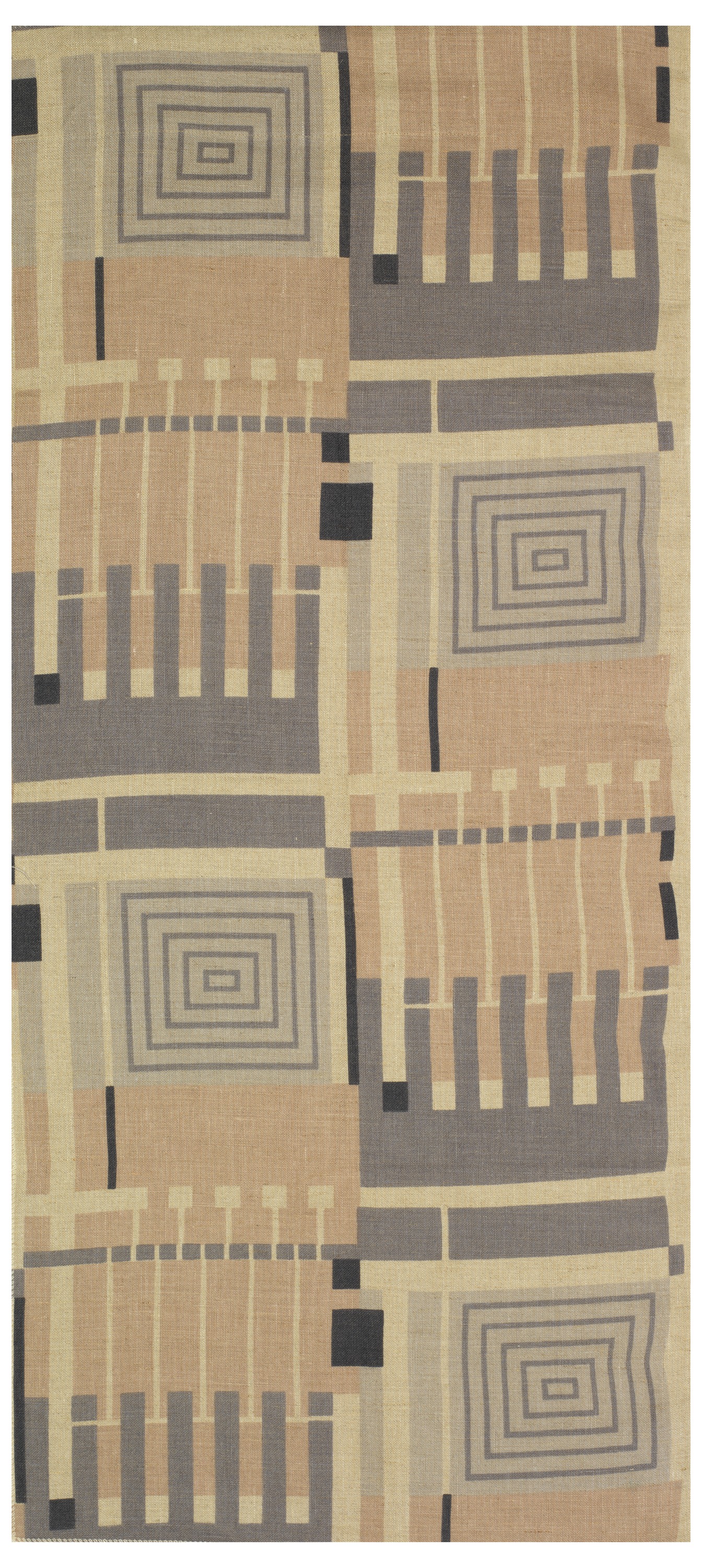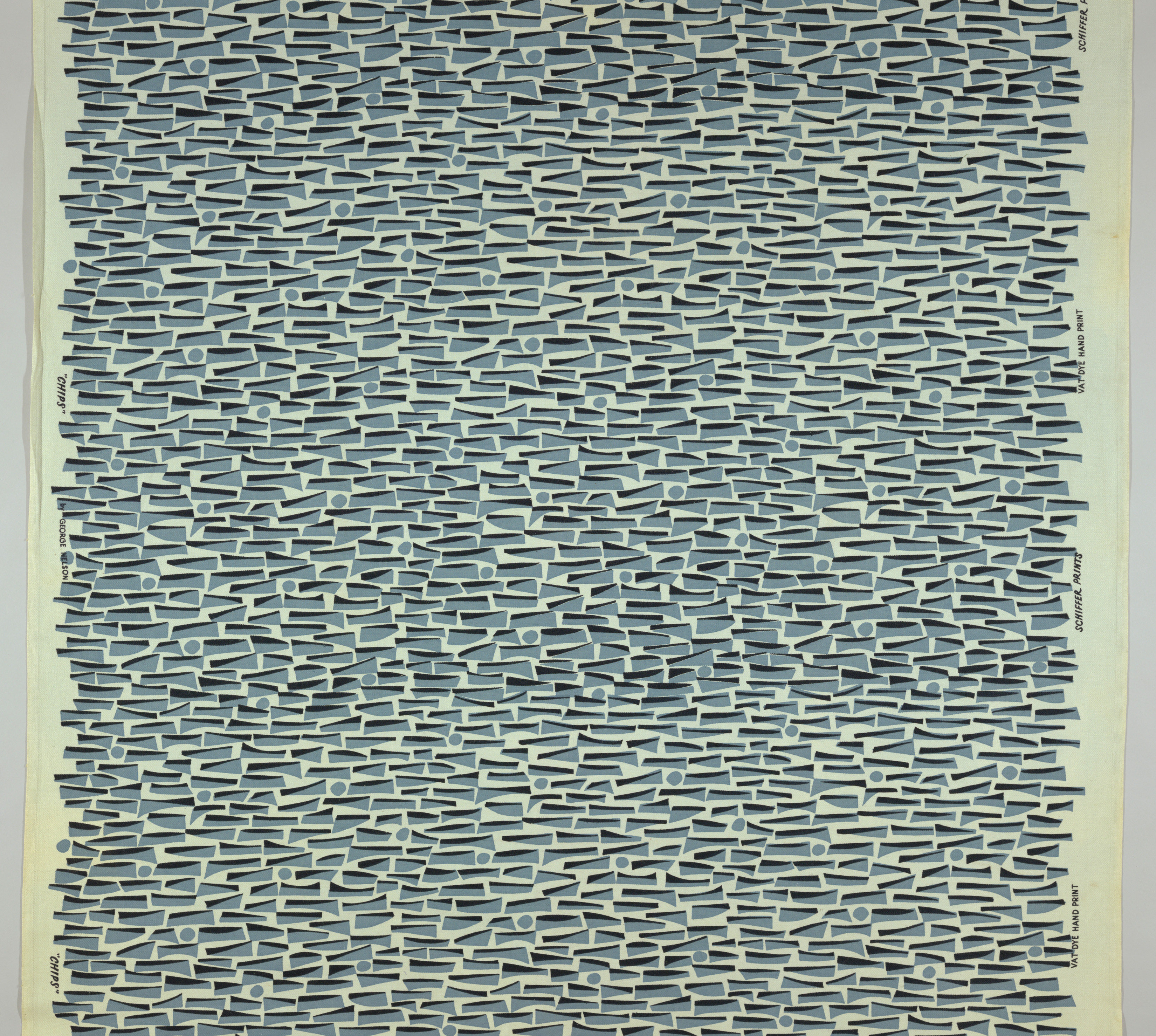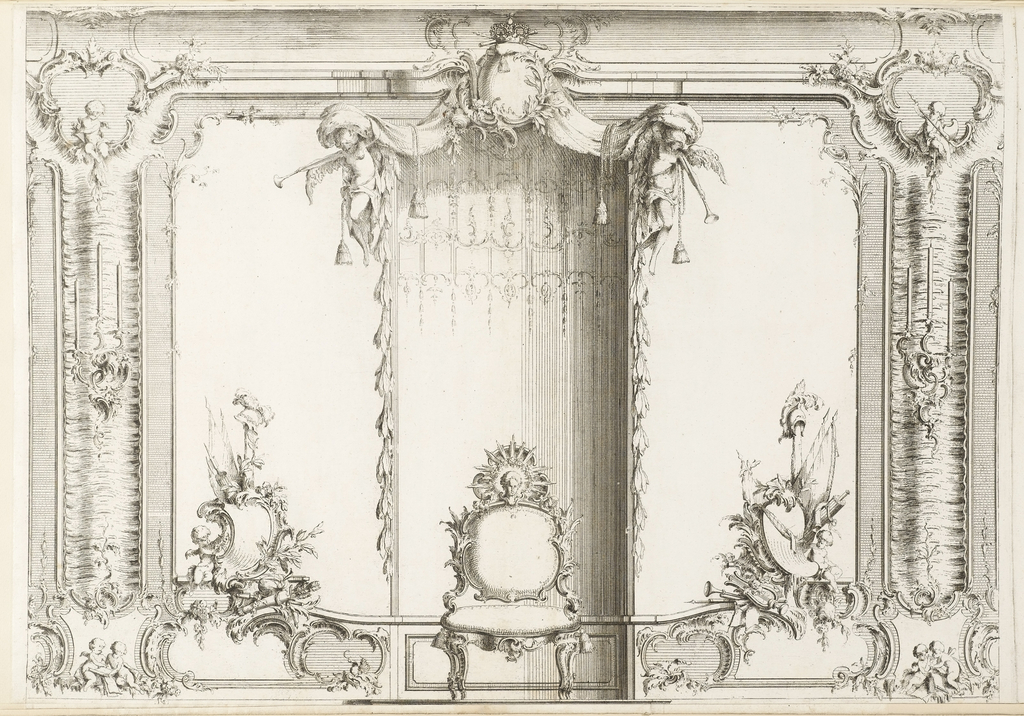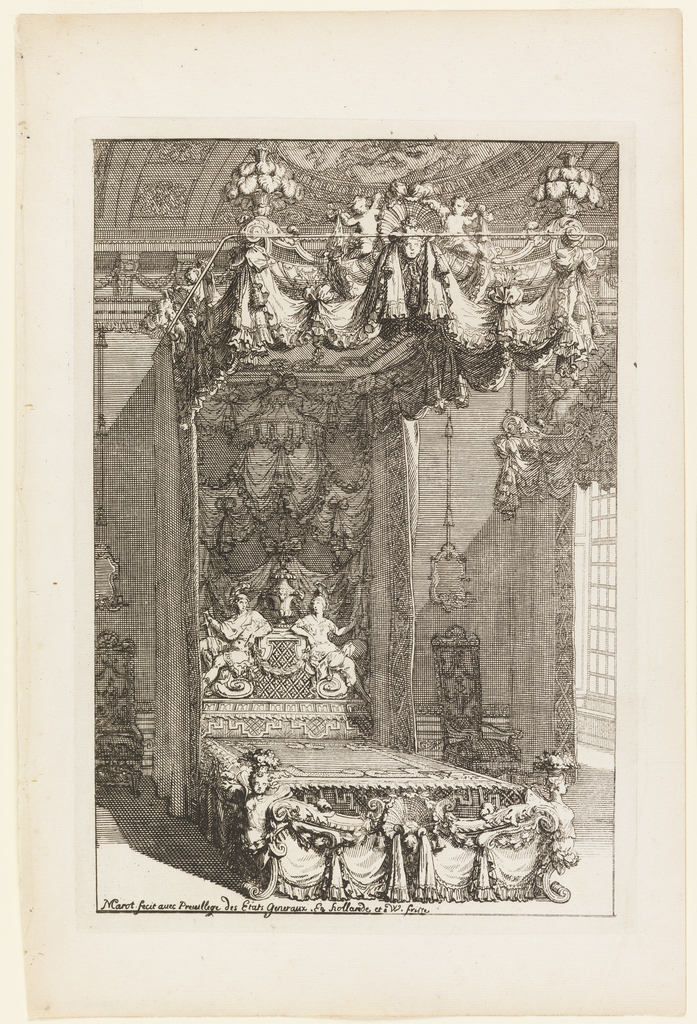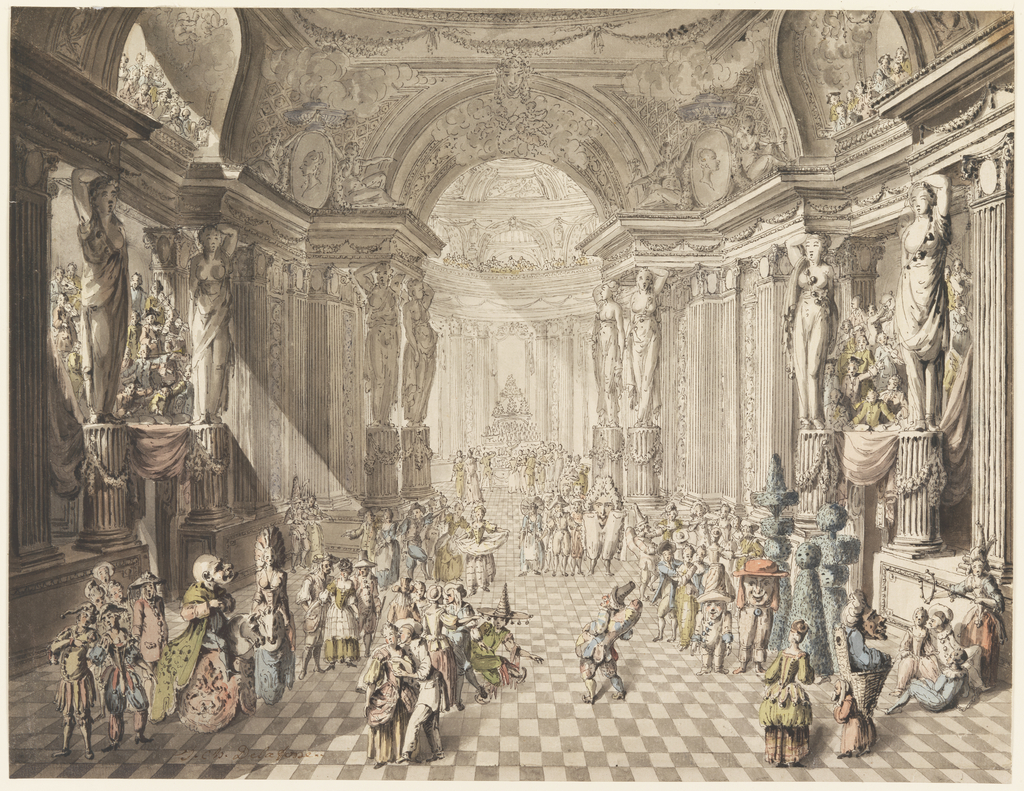Title: The Architect, builder and woodworker. Publisher: New York [etc.] C.D. Lakey [etc.] 1868- Smithsonian Libraries Reference Number: NA1. A43 CHMRU Builder and Wood-Worker Masthead. Vol. 18, no.2 Feb, 1882. NA1. A43 CHMRU The Cooper Hewitt Library collects a variety of trade periodicals, especially those dealing with architecture and the building trades. The Architect,...
This folding fan dating from the 1880’s-90’s is a perfect example of the expression of the Aesthetic Movement in costume accessories. Fans and the Aesthetic Movement are deeply intertwined. The Aesthetic style was strongly influenced by the decorative arts of Asia, where fans originated. During the late 19th century, Asian fans, particularly from Japan, were...
While interior designer Dorothy Draper is most well-known for baroque interiors featuring hallmarks of large floral patterns, plants, and vibrant colors, she adapted her vision to a range of spaces, including automobile and airplane interiors. This 1957 design for an airplane club area still evokes elements of the Draper fantasy but in a style more...
Although most of his home furnishings were designed for specific interiors, Frank Lloyd Wright created several lines of products for the market, among them the Taliesin Line of wall coverings and textiles, produced in partnership with F. Schumacher and Company. The collection included wallpaper, woven fabric, and printed fabric such as this, and many of...
In the aftermath of World War II, a number of textile producers attempted to revitalize the industry by enlisting recognized personalities in art and architecture to design screen prints. “Perhaps the most outstanding name collection is Stimulus Fabrics produced by Schiffer Prints,” Alvin Lustig wrote in American Fabrics Magazine in 1951. “There was not a...
The appartements in eighteenth-century interiors were organized hierarchically to differentiate between ceremonial, social, and private spaces. This hierarchy was reinforced through increasingly elaborate decoration as the designation for spaces grew more public. With this in mind, the decoration adorning the paneling, or boiserie, would have made guests aware of the types of social interactions which...
An opulent bed, almost completely dominated by its hangings, pushes at the edges of the border in this etching by the French designer and architect, Daniel Marot. This design is for a state bed (lit d’apparat), a bed that was purely ceremonial rather than functional, and kept in royal palaces and aristocratic residences in the...
Join us for a special panel discussion featuring our 2014 National Design Award winners. Panelists will discuss what drives and inspires them as designers, and include John Edson, President, LUNAR (Product Design Award); Aaron Koblin (Interaction Design Award); Narciso Rodriguez (Fashion Design Award); and Robin Standefer, Principal, Roman and Williams Buildings and Interiors (Interior Design...
Dancers in outrageous costumes and masks mingle in a lavish interior. This finished drawing likely depicts a Parisian vauxhall, which were public entertainment spaces, often set in, or near, pleasure gardens. They were first popularized in seventeenth-century England, and became fashionable in France in the late 1760s with the construction of the Colisée (The French...

